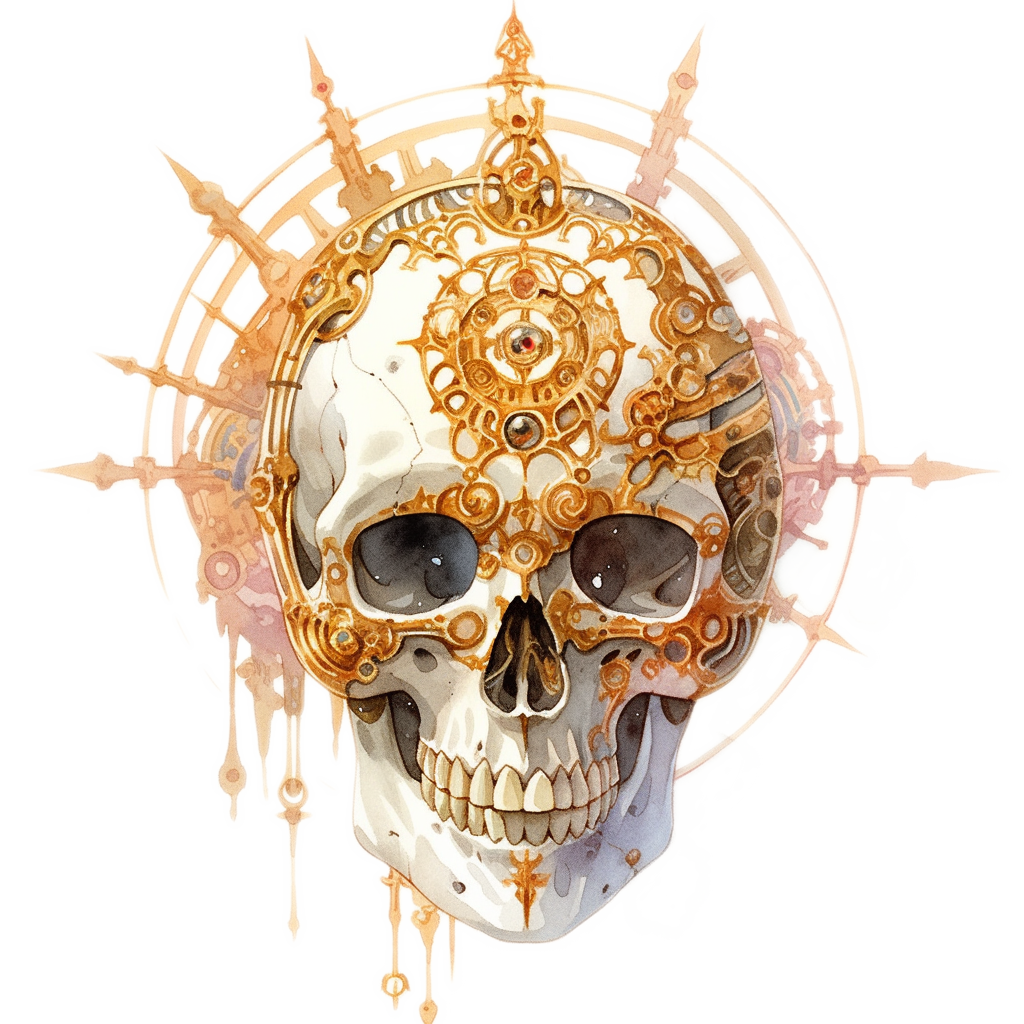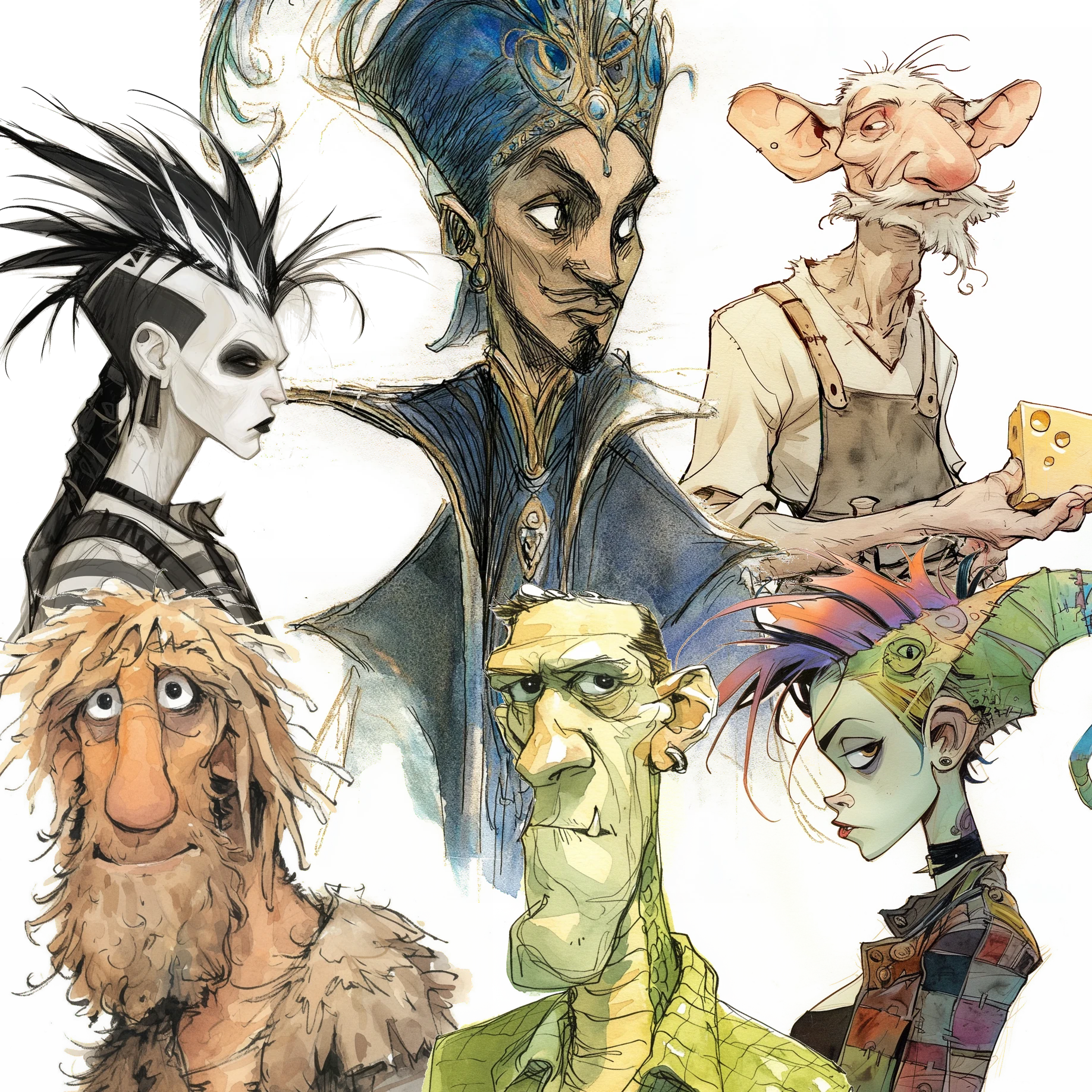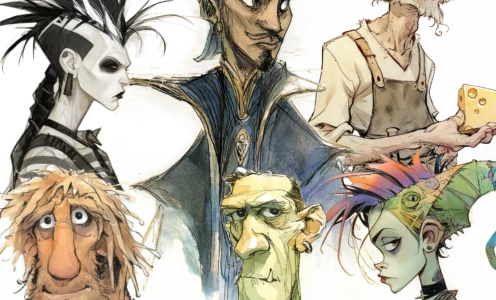[ Beastlands ] [ Krigala | Brux | Karasuthra | Threefold Ocean ]
[ Animal Lords ] of the [ Land | Past | Skies | Tundra | Waters ]
Faces of the Wild: The Animal Lords
Realm: Beastlands
The Animal Lords are quasi-powers in their own right; and on the Beastlands, they are virtually invincible. Of course, like so many other creatures in the Planescape setting, the Animal Lords are not meant to be enemies for the PCs to slash their way through in order to gain treasure. Rather, they are primal forces for the characters to meet and encounter in their quests on the Beastlands, as the Animal Lords as possibly the most prominent and powerful beings on that Plane. However, on the Beastlands, the Animal Lords are referred to as the seyhrain, or “beast lords” in the animal-speak of the Beastlands. However, for the sake of convenience and familiarity, the term “Animal Lord” will be used frequently to refer to the seyhrain.
On the Basic Nature of the Seyhrain
| Word | Meaning |
|---|---|
| arikina | life-friend |
| deserntak | mortal-offspring |
| gaeireh | self-discovery |
| jakishta | blood-feud |
| khirau | beast-offspring |
| seyhrain | beast-lord |
| shakista | silent-feud |
| tyekre | forbidden |
Some Primes believe that the Animal Lords to be the Powers of the animals of the Beastlands—but that’s not true exactly. See, Animal Lords are more the archetypes of the animals found on the Prime. Each Animal Lord represents the epitome of their animal type: the Cat Lord, for example, is the peak of ‘catness’. While this may seem like an obvious statement, it also implies that the Cat Lord shows no signs of domesticism. Animal Lords don’t always exhibit the same kinds of behaviour that a basher would expect to see on the Prime Material Plane; indeed, their the presence of a Lord has been seen to cause domesticated animals to revert to their primal natures. [While this does not automatically cause a ranger’s followers to attack them, it does sever any bonds between the two until the Animal Lord leaves the area, in which case the animal follower returns to the ranger, somewhat confused but invigorated.]
While they won’t die from old age, they are not immortal, in fact, the lords of the Prey Animals are frequently killed off and replaced. This is the Way of the Beastlands. Animal Lords may be of any gender—for example, while the current Cat Lord is female, many of the previous Cat Lords have been male. Some animal lords are both genders or neither; it depends on the kind of beast they are,
One final point—only natural animals have an Animal Lord; magical beasts, aberrations, planar creatures and constructs do not. A cutter won’t find an ‘aeserpent lord’ on the Beastlands, because it’s not an animal from the Prime, it’s a planar serpent that’s found only on the Beastlands. The Serpent Lord has only a small degree of influence over its planar wards. Trees have their own Lords, who dwell in the Valley of the King of the Trees.
Anthropomorphism
The Animal Lords are not just the archetype of their particular animal species; their humanoid form also represents much of what the mortals believe animals to be. Humans generally view cats as self-obsessed and proud beings, so the Cat Lord takes on those characteristics as well—although cats are in reality neither self-obsessed nor proud, merely animals without the concept of human emotions or feelings. In this situation, the ignorance of primes and planars alike shapes the Animal Lords to become more than what their animals actually are, and raises a philosophical question. Do the Animal Lords exist because they are ‘worshipped’ by animals, or are they a formation of the beliefs of all beings, animal or not, throughout the multiverse?
Origins
It’s said that in the beginning, there was one Animal Lord. This was back at the very beginning of beginnings of the Planes, where the Prime Material was breathing its first breath. This was when there were only a few types of animal, and they were not well established. Then, the spirits of all animals came to the Animal Lord as petitioners when they died. As animals became more prominent and diverse—and graybeards and religious types of course disagree greatly on how that process occurred—more Animal Lords emerged to represent beasts of each niche, and the original Animal Lord became one with the Beastlands. Or perhaps they became the very essence of the Beastlands, but that’s most likely screed, since it doesn’t explain the good nature of the Beastlands, even though the majority of it is comprised of animals with no concept of morals. Scholars argue—as only scholars know how—about whether it’s the overall effect of Nature forming benevolent and balances ecosystems that is what’s ‘good’ about the Beastlands, even if the fates of individual beasts may be short and brutal.
There are only vague references to these myths from the earliest recorded writings on the Prime, where scholars are notoriously bad at recording anything related to the Outer Planes. These writings have been maintained within the Fortress of Disciplined Enlightenment, and have been painstakingly transferred into Planar Common by the Fraternity of Order. A passage of particular relevance follows:
“As our journeys into these strange realms continue, we have seen wonders beyond our imagining. We have recently spent the better part of three weeks walking across a seemingly endless savannah, desperate in all things to return home to blissful Athas, but no matter how far we walk we seem unable to return from where we started, despite having travelled for a month opposite the direction we came. Each in our group wishes to return to the pristine shores of the lakes and oceans and soak ourselves in the clear water, if only to escape from the unbearable heat of the sun above, which beats down unrelentingly upon us without respite of night. What is this strange hell? We recently encountered a lion of unusual size, some fifteen feet long, surrounded by a harem of eight female lions. I approached us and it spoke to us, “This Land is mine. The Lion King hunts all intruders that step foot inside his territory.” With that, he set to attack us, and our immediate reactions to flee very well may have saved our lives. However, the cleric was been stricken down in our escape: we fear she is lost.”
Most likely, the Lion King that the Primes meet is the Cat Lord in another form. The passage dates to the time when humans first began arriving in the Outer Planes. This is because, as most know, the Outer Planes were shaped by the beliefs of Primes. Perhaps the Animal Lords were created in the same way as the Outer Planes: they are the archetype of animals seen by mortals on the Prime. However, many things remain dark. Why is there no human or elf Animal Lord? Or is that where the powers come in?
Death of an Animal Lord
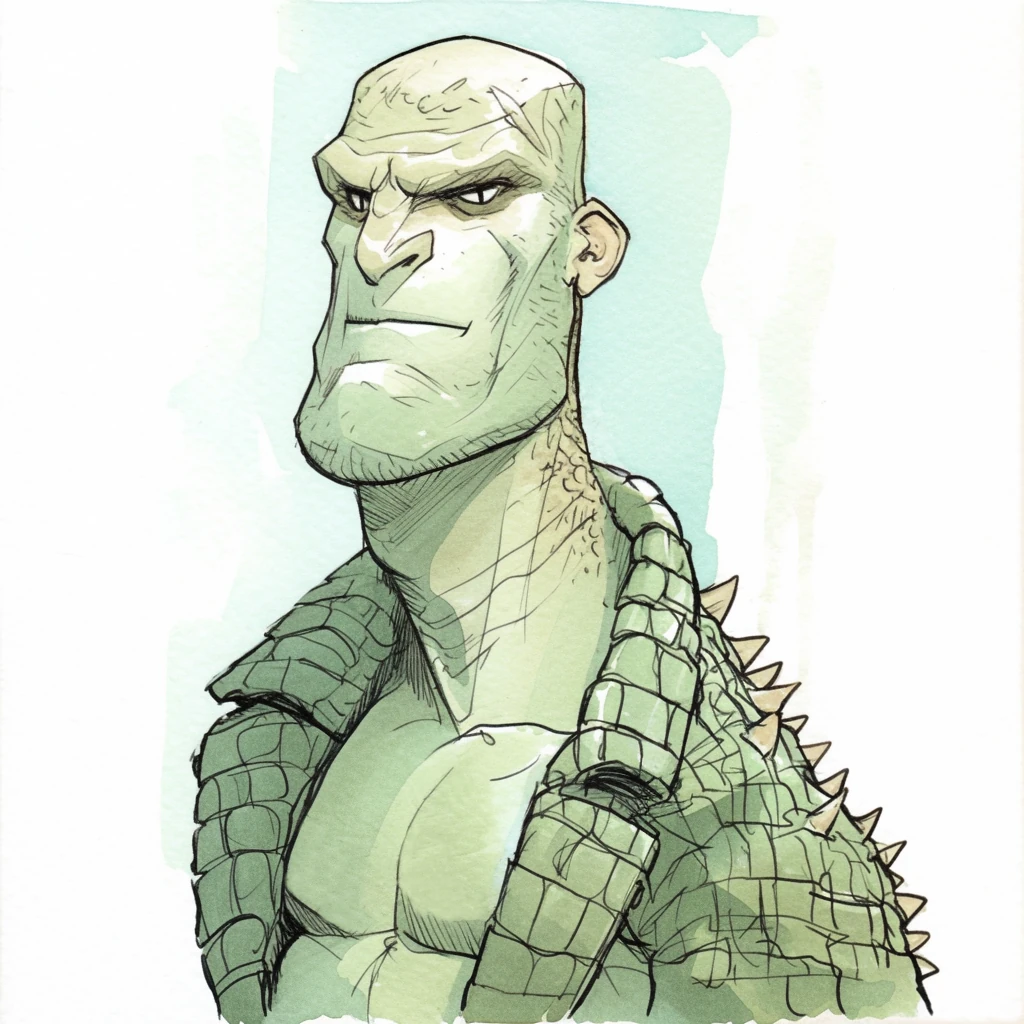
While graybeards once doubted it was possible, it is now known that Animal Lords can indeed die. Recently, the former Cat Lord mysteriously vanished—nobody is really sure of how he met his end or what was so powerful so as to be able to destroy the living incarnation of the cat. A replacement Cat Lord just appeared without warning or fanfare. Most likely, she was a servant of the deposed Cat Lord who was selected to become the new Lord. In any case, no animal species goes without an Animal Lord at any time—replacement and promotion is instantaneous, most likely by the strange Nature powers that rule the Beastlands. Selection seems to be on the basis of merit, so as to discourage backstabbing and Machiavellian tactics between beasts.
It is doubtful as to whether or not an Animal Lord can die of natural causes: Graybeards believe the only way for a Lord do die outside of violence is with the extinction of the species that they represents. With a near-infinite number of Primes, species are rarely made completely extinct. However, exceptions do exist; the dinosaurs of the Forbidden Plateau have been driven to near-extinction throughout the Prime and the Dinosaur Lord itself is feeling the loss. The Dodo Lord, once patron of a noble race of birds, withered away and died as his wards were hunted to extinction on the Prime and he did not do enough to protect them. Or perhaps he did not die completely. Chant does that the strange half-plane of Pangaea is home to a number or strange creatures which are no longer found in the wider planes. The so called Lords of the Past are the last remaining examples of species on the wane.
Petitioners of the Beastlands
When an animal dies in the Multiverse, their spirit journeys along the River of Souls alongside those of humanoids. How they get from there to the Beastlands—now that’s a story for another place—but once in the Beastlands they gather towards their respective Animal Lord and reform in the forms that they held in life. These animal petitioners serve the Animal Lords not out of any magical subordination, but out of loyalty to their own kin.
Less common, but still notable, are the petitioners of sentient humanoids who are sent to the Beastlands after being judged in the Underlands. Now these are usually the spirits of cutters with a strong affinity to the natural world, who also lived the Way of the Beastlands—taking only what they need, giving thanks to the land, protecting the wild place. Most commonly they’re druids or rangers, but benevolent farmers, shepherds and fisherfolk may also end up here. These cutters adopt animal shapes too, based on the personalities they had in life. A ranger who was also a hunter might become a wolf petitioner; a shepherd who treated their flock well might become a mountain goat; a wise and caring matronly druid might become a bear. These petitioner might look the same as the animals of the Beastlands, but they can talk. Some can even cast spells. So the moral is to be careful what you say in front of a beast in the Beastlands, because some of them can understand you.
There’s a third kind of animal in the Beastlands. And these ones are just regular animals who found their way to the Beastlands. They can’t talk, don’t cast spells, and they’re not living out an afterlife. Sometimes things are just normal, berk—even out on the planes.
Animal Lords and Free Will
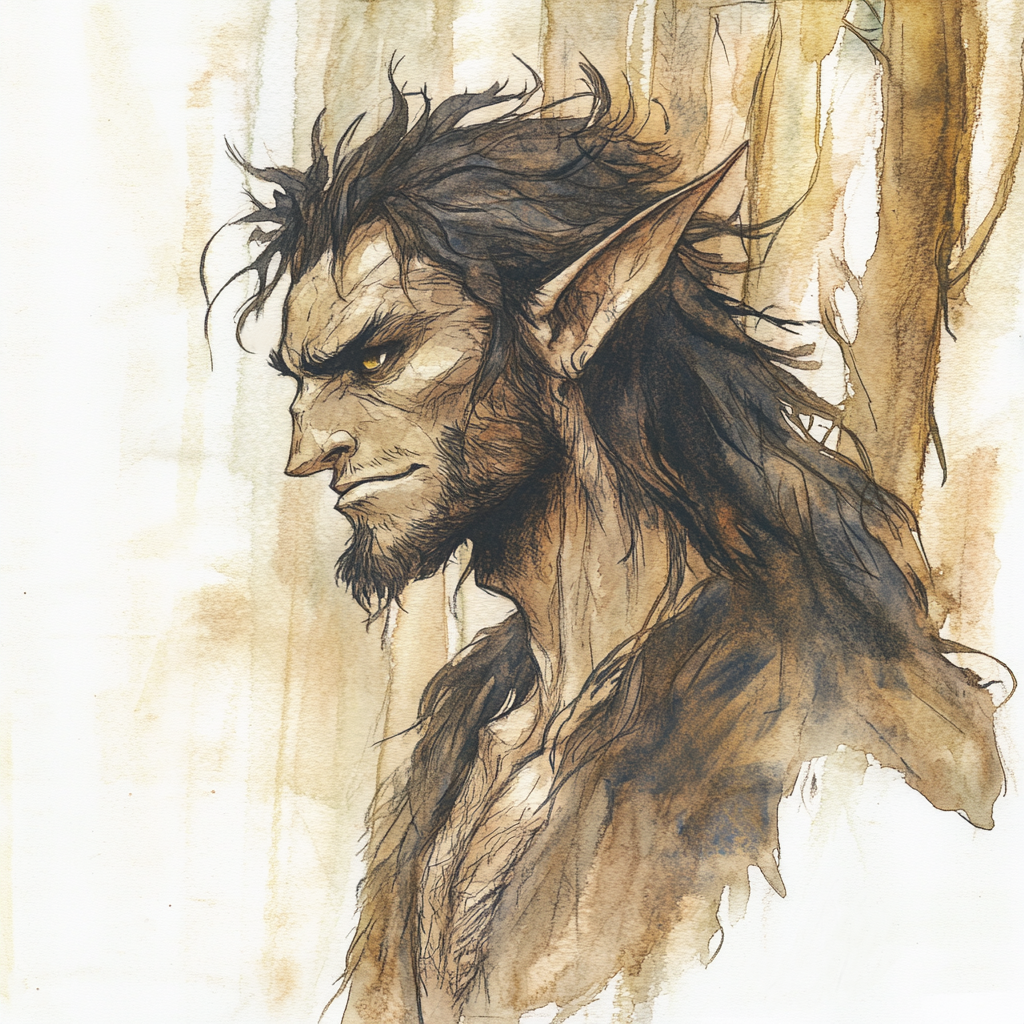
An Animal Lord is an extension of the Beastlands itself, but each is also a unique being with their own wants and desires. They’re individuals above all, and each has a different attitude on their place on the Beastlands—as evidenced by the recent change in the leadership of the cats and the varying attitudes between the current and previous Cat Lords. Chant goes that each Animal Lord has the free will to do whatever they want with their charges, although it’s more than likely that the Beastlands itself would not promote a beast to Animal Lord that possessed evil tendencies. The first Wolf Lord was a cruel beast capable of great wickedness, until it was overthrown by its own warden beasts and replaced by a Wolf Lord more in touch with Nature. This was an incredibly unusual event.
The magnificent panthers and tigers that guard the Cat Lord are not magically compelled or charmed, and cannot be forced to disobey the orders of their Animal Lord, even with magic. On the Beastlands, the Animal Lords are practically powers. In all things related to their kin, an Animal Lord’s orders are absolute; they simply cannot be circumvented through any means mortal or divine.
Furthermore, Animal Lords cut off from the Beastlands remain alive, if diminished in power once the invigorating magic of the Beastlands has left them. They are replaced, for a species cannot be without a Lord—which also means the cut-off Lord cannot return unless they kill their replacement, in order to retake their place as head of their species. Otherwise, they themselves will be killed by the new Lord. Fortunately, Animal Lords are generally not ambitious and if cut off or banished, rather than return to face mortal danger, will typically chose another place to make their residence—for example, the Peacock Lord of Sigil. On a few rare occasions, deposed Animal Lords have make their way to the Prime to become the leader of their own group of their patron animal.
The Animal Lords have no ambitious goals for the Beastlands; no Animal Lord wishes to control the whole plane. They mostly just wish to preserve their species and allow it to prosper. However, each Animal Lord has their own unique way of achieving their goals. The Cat Lord, in her own a proud way, wishes to increase her prestige by attempting to force Bast’s cat petitioners to worship her instead. Other Animal Lords see the Cat Lord’s attempts as betraying the true nature of the Beastlands, and prefer to advance their agendas more quietly.
Distinctions Between Animal Lords
What constitutes a species? While the Cat Lord is the absolute ruler of all cats—lions, panthers, wildcats, tigers, and so on—in the Beastlands, there exist many kinds of Animal Lords to represent the birds of the Beastlands—Hawk, Swan, Owl just to name a few. The most interesting example perhaps would be how the existence of both the Dog Lord and the Wolf Lord blurs the line. While wolves and wild dogs are clearly members of the dog species, they each come under the purview of different Animal Lords. Some would theorise that this is because wolves such a extremely prominent species on the Prime, with such a distinct character from dogs that they deserve their own Animal Lord. Others would claim that the Dog Lord’s jakishta on the Wolf Lord centuries ago weakened Dog, thus strengthening Wolf. The most reasonable explanation is perahaps that the Beastlands itself looks out for its species, creating and destroying Animal Lords as is best for the needs of the Animals. Should there be a need to a Wolf Lord, the Wolf Lord is created—to the great chaggrin of the Dog Lord)]. Should there some day be need for a Lion Lord, a Lion Lord will be created, possibly creating some enemies among the Cat Lord and her pride in the process.
Politics Among the Beasts
| Word | Meaning |
|---|---|
| arikina | life-friend |
| deserntak | mortal-offspring |
| gaeireh | self-discovery |
| jakishta | blood-feud |
| khirau | beast-offspring |
| seyhrain | animal-lord |
| shakista | silent-feud |
| tyekre | forbidden |
By their nature, the seyhrain do not dabble much in politics, for this is not the Way of the Beastlands. However, the Animal Lords have developed a complex system of terms that might seem non-dramatic to Outsiders, but the mere declaration of one of these terms constitutes a major event on the Beastlands. These terms were codified by the Owl Lord shortly after the War of the Avians on the Beastlands, back after the single Bird Lord split into the dozens of Bird Lords that now exist today.
These political oaths are not issued lightly, and usually indicate that fate of an Animal Lord’s species hangs in the balance. While the stories of the Animal Lords may refer to many examples of such declarations, it’s important to remember that these stories are separated by hundreds of years. Immortal animals have long memories and what passes for politics on the Beastlands moves slowly. Finally, while Beastland politics are of great significance to the lives of the beasts of the Beastlands, their impact on the Cage and the rest of the Planes is minimal, if even noticed at all.
More chant on the language of the Beastands here…
Offspring
Since the Animal Lords are the personified symbols of their patron animals, it should come as no surprise that their behavior resembles that of their animal counterparts. Animal Lords are known to mate often with members of their own species, and far less often with mortals of extreme worth. The offspring is planetouched, like all tieflings and aasimar, but different due to their parentage.
With Mortals: Deserntak
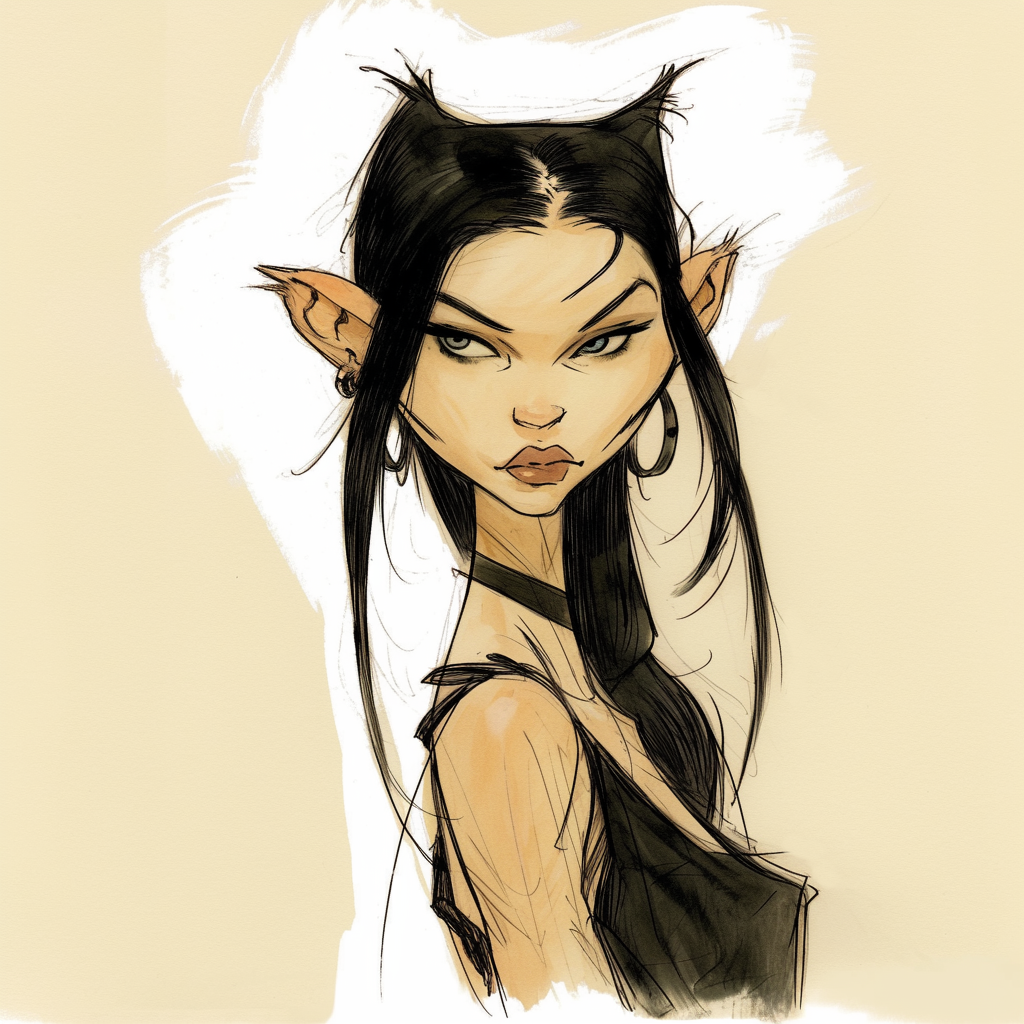
In an extremely rare occurrence, an Animal Lord will mate with a mortal, usually a druid or another mortal in touch with the nature of the Beastlands. These offspring are called deserntak, or mortal-offspring-lord, by the Animal Lords and other residents of the Beastlands. The deserntak are rarely raised by the Animal Lord; if an Animal Lord is the parent, then the child is often abandoned in the wild to fend on their own once they reach a reasonable age. Should they survive, then that is good; the child has earned its life. If the child dies, then it is good as well: Such a child would have merely been a weakness to the Animal Lord and their followers. The deserntak will remain in a form somewhat resembling the humanoid form of the Animal Lord parent for their entire lives: The offspring of an Animal Lords does not possess most of their parent’s special abilities. They do, however, retain a hint of their sire’s danger sense, able to sense danger 25% of the time, with a 5% chance to know the exact nature of the threat. They have a lifelong affinity with their parent’s patron species; a son of the Cat Lord need never fear the roaming lions or panthers of the Beastlands because of their heritage. The adventuring types typically become thieves, fighters (especially barbarians), druids, psionicists or shifters. A few have become rangers, but these are the exception: rangers work with society to respect nature, while druids work to protect nature from society. More information on creating deserntak PCs or NPCs may be found here. [coming soon]
The deserntak tend to be conflicted in psychology and lifestyle. They don’t quite fit with either the civilised or bestial sides of their personalities, and as such are confused at best. Many deserntak are not seen by most outsiders; they prefer to stay in the wilds of the Beastlands upon returning to their parents, where they are tolerated at best. However, a few deserntak have made their way to Sigil, where they find themselves overwhelmed by the civilisation and sheer number of people there. It is there that they find their animal brethren enslaved and nature a mere afterthought in the minds of Cagers. Is it any wonder that most deserntak stay in the Beastlands?
With Animals: Khirau
Far more common than deserntak are the khirau, the offspring of an Animal Lord and a member of that Animal Lord’s species. The khirau are literally thick on the Beastlands; many are the offspring that an Animal Lord has sired. The khirau are respected by the animals of the Beastlands as the deserntak are, but they fit in better because of their obvious animal nature. The khirau typically serve as hunters, messengers, and scouts for their parents. [They have maximum hit points per hit dice and on general do an extra die of damage with their attacks. For example, a tiger son of the Cat Lord would have 45 hit points and do 2d4+1 damage with each claw and 2d10 damage with their bite.] Most Outsiders wouldn’t be able to tell the difference between a khirau and a normal animal, only perhaps observing the khirau to be larger than average.
The Forbidden: Tyekre

Spoken in the most hushed of voices are the tyekre, the result of the offspring of an Animal Lord and a member of an animal species other than the Animal Lord’s patron species. Such an act is against the Way of the Beastlands, and every Animal Lord knows it. However, the first Wolf Lord was a cruel and lustful sort, and he literally had offspring with whoever he could, seeing the children as his mark on the world. However, it turned out that his offspring were mangled beings that contained his wicked essence. These beings were called tyekre by the Owl Lord, who was first to discover their existence; “forbidden” in the beast-tongue of the Beastlands. They were purely evil, and hated everything of beauty and light. They hated most their father the Wolf Lord, and it’s whispered that they had a hand in his overthrow at the fangs and teeth of his own wolf pack. After his death, they retreated into the corners of the Beastlands.
Such offspring have the traits of both of their parents, with a slight predisposition towards their seyhrain parent. For example, a child of the Wolf Lord and a tiger would have yielding a combination between the two. They are as tough as the khirau, but cruel, deformed abominations that resent the Natural World and its creatures. [Each of the tyekre are unique and should prove challenging opponents—and maybe be useful adversaries for telling stories based on the Beastlands.]
Followers
Normal Animals: Only the most powerful of the normal animals are permitted to run with their respective Lords, because they serve as companions, bodyguards, and mates. Animals encountered in the presence of the Animal Lord’s realms will have full hit points per hit dice and be fanatically loyal to their Animal Lord. In addition, they each act as the mouth and the eyes of their Animal Lord; their Lord may see through their eyes at any time and implant thoughts into their heads. As stated before, they cannot magically control their followers, but instead follow their orders through a simple and fanatical commitment to their Lord.
The Warden Beasts: As powerful as the Animal Lords are in regard to their specific spheres of influence, they’re not powers: they have to move around the Beastlands like anyone else. Therefore, there’s no earthly way that they can be in every place at once. That’s why each Animal Lord controls a number of lesser servants known as the Warden Beasts that carry our their orders to the rest of the animals. Of course, they’re usually not carrying out orders because the Animal Lords rarely issue orders. The Warden Beasts are more protective stewards than anything, offering their charges guidance on their eventual union with the plane. Oddly, no Warden Beast has ever been known to kill another one (except in the case of the first Wolf Lord), so it is likely that the Warden Beasts have been infused with the essence of the plane itself, setting them apart from the petty struggles between the Animal Lords. Each Animal Lord has a Warden Beast that acts as their second-in-command and liaison to the rest of their Warden Beasts throughout the Plane.
The Realms of the Seyhrain
Each Animal Lord creates a mobile realm around them, in which they psychically project their own set of morals and values upon the region that surrounds them. These realms can be anywhere from a hundred feet to five miles in diameter. Realms that are extremely small are usually those of Animal Lords whose species are close to eradication. The Dodo Lord suffered this fate: as her followers were hunted to extinction across the Prime for their meat, her realm shrank precipitously, until she eventually became nothing at all and faded into nonexistence. Some graybeards suspect that her corpse floats somewhere on the Astral, but such a thing would imply the seyhrain were powers in their own right. Other chant goes that Lords of extinct species go somewhere else, and talk of a half-plane called Pangaea.
Primes and other Outsiders know the realms of the Animal Lords by cute-sounding names, such as the “Cat Lord’s Prowl” or the “Mouse Lord’s Scurry” or the “Owl Lord’s Soar”. While these names are all very well for the Outsiders, but there’s no way in Baator that the seyhrain would insult another their wards by naming their territories like that. Beastlanders even dislike the way that the Outsiders need to put names on everything. They don’t understand how the Outsiders can’t understand that their territory is just that: their territory. It’s not the “Owl Lord’s Soar” or the “Elephant Lord’s Trample”, it’s just their territory. They (or their Warden Beasts) will sharply correct any Outsider using such terms. It’s just a form of ignorance, much like staring up into the sky in Sigil: it’s a mark of Cluelessness in a body. Canny bloods won’t refer to the realms of the Animal Lords by the names of the Outsiders, but rather will not refer to them by any name at all; it’s simply the realm of the Cat Lord or the realm of the Owl Lord, nothing more and nothing less. Likewise, the Cat Lord should be addressed as the Cat Lord, or if you’re being familiar, just Cat.
In the realm of an Animal Lord, the terrain changes itself to become that which the Animal Lord desires it to be. For example, the Fox Lord’s realm is a realm of tangles and brambles. This terrain moves with the Animal Lord, but it’s not so obvious that observers on the edge of such a boundary would notice a marked border as they enter or leave the realm: the brambles merely give way to open forest, or vice versa. Such is the Way of the Beastlands; nature is not abrupt or sudden, more of a continuous transition.
Source: Dave King aka Heregul, Jon Winter-Holt. Canonwatch: This piece expands greatly upon the limited lore on animal lords from the Planescape Monstrous Compendium and Planes of Conflict.
